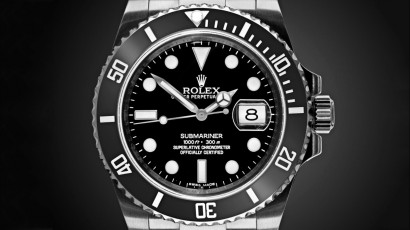
The Most Overlooked Part Of A Watch

IWC
“While thick leather straps with contrast stitching are often found on beefy sports watches, such as those from Panerai, thinner, more exotic skins are still the choice for high-end dress watches.“
Like the opposable thumb, which allowed humans to evolve beyond the rest of the animal kingdom (and to text your girlfriend), the humble watch strap allowed timepieces to move from the pocket to the wrist, thus changing horological history. Often overlooked, a strap is perhaps the least expensive but most indispensable component of a wristwatch. Without it, the watch is rendered unwearable, lost or living in a pocket or sock drawer. Straps can be easily changed to suit moods, styles or outfits, from tactical to tasteful. While they come in a countless variety of colours, materials and styles, straps can be broken down into a few main categories.
The first watch straps were made of leather, a natural material that was cheap and readily available. Early wristwatches were developed for foot soldiers in the First World War, who needed to be able to quickly check the time or time enemy artillery without fumbling in a pocket for their watches. They were nothing more than pocket watches with strap bars welded on each end, through which the leather strap was wrapped and riveted.
Watches continued this way for decades, but as these “wristlets” replaced pocket watches as the predominant fashion, straps evolved. They became thinner and less crude, and removable spring bars allowed for changing of straps without rivets.
Most of the straps we see on watches today have not changed much from these mid-century leather ones. Different animal skins followed leather, and now straps can be made from cowhide, horsehide, crocodile, lizard or even ostrich skin. For simplicity’s sake, we’ll call all of these “leather” straps. While thick leather straps with contrast stitching are often found on beefy sports watches, such as those from Panerai, thinner, more exotic skins are still the choice for high-end dress watches, since they tend to complement a suit with leather shoes and a belt.
At the other end of the strap spectrum is the humble nylon strap. These one-piece straps, which can be bought for little more than a fast-food lunch, were first developed for the British military. Designed to run across the back of a watch and through the spring bars, nylon straps are cheap, but they may also be the best way to save your expensive watch since, if one spring bar breaks, the watch remains on your wrist thanks to the continuous one-piece loop. The straps are often known as NATO straps because they were given a stock number by the North Atlantic Treaty Organization for use by soldiers and divers. Ironically, NATO straps have become hugely popular with hipsters and fashionistas, and are sold in a rainbow of colours and striped patterns by everyone from J.Crew to J.Press.
Rubber straps have a long association with sports watches, and they lend themselves well to this use. Supple, comfortable and resistant to water and sweat, rubber straps are most often found on dive watches. In the 1960s, the first rubber straps were called “Tropic” straps, and the rubber used was stiff and often became brittle. But at the time they were a better choice than leather for obvious reasons and were cheap and easy to replace when they wore out. Now, high-quality rubber straps can be found on even expensive dive watches and can cost hundreds of dollars on their own.
The last main genre of watch strap is the metal bracelet. First popularised by Rolex for its early sports watches, metal bracelets have many obvious advantages. They are very durable, resistant to anything you expose them to and nonabsorbent. They tend to be cooler and more comfortable in hot weather and can be sized to very precise fit using micro-adjusting clasps. Typically rendered in stainless steel, but also in titanium or gold, metal bracelets are perhaps the most popular kind of band on most watches sold today.
